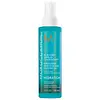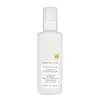What's inside
What's inside
 Key Ingredients
Key Ingredients

No key ingredients
 Benefits
Benefits

 Concerns
Concerns

 Ingredients Side-by-side
Ingredients Side-by-side

Water
Skin ConditioningCetearyl Alcohol
EmollientPropanediol
SolventCetyl Alcohol
EmollientArgania Spinosa Kernel Oil
EmollientHelianthus Annuus Seed Oil
EmollientHordeum Vulgare Seed Extract
Skin ConditioningParfum
MaskingHydrolyzed Rice Protein
Skin ConditioningHydrolyzed Quinoa
Skin ConditioningWheat Amino Acids
Skin ConditioningSoy Amino Acids
Skin ConditioningCitric Acid
BufferingGlucose
HumectantGlycerin
HumectantDimethicone
EmollientCaprylic/Capric Triglyceride
MaskingBehentrimonium Methosulfate
Stearamine Oxide
CleansingOlealkonium Chloride
Behentrimonium Chloride
PreservativeAmodimethicone
Isopropyl Alcohol
SolventCaprylic/Capric Glycerides Polyglyceryl-10 Esters
EmollientXylitylglucoside
HumectantGuar Hydroxypropyltrimonium Chloride
Skin ConditioningAnhydroxylitol
HumectantGlyceryl Stearate Se
EmulsifyingCinnamidopropyltrimonium Chloride
Xylitol
HumectantTrideceth-12
EmulsifyingPolyquaternium-7
Polyquaternium-11
C12-13 Pareth-9
EmulsifyingCetrimonium Chloride
AntimicrobialArginine Hcl
Skin ConditioningSerine
MaskingThreonine
Algin
MaskingChitosan
Potassium Sorbate
PreservativeSodium Benzoate
MaskingBenzyl Alcohol
PerfumingPhenoxyethanol
PreservativeWater, Cetearyl Alcohol, Propanediol, Cetyl Alcohol, Argania Spinosa Kernel Oil, Helianthus Annuus Seed Oil, Hordeum Vulgare Seed Extract, Parfum, Hydrolyzed Rice Protein, Hydrolyzed Quinoa, Wheat Amino Acids, Soy Amino Acids, Citric Acid, Glucose, Glycerin, Dimethicone, Caprylic/Capric Triglyceride, Behentrimonium Methosulfate, Stearamine Oxide, Olealkonium Chloride, Behentrimonium Chloride, Amodimethicone, Isopropyl Alcohol, Caprylic/Capric Glycerides Polyglyceryl-10 Esters, Xylitylglucoside, Guar Hydroxypropyltrimonium Chloride, Anhydroxylitol, Glyceryl Stearate Se, Cinnamidopropyltrimonium Chloride, Xylitol, Trideceth-12, Polyquaternium-7, Polyquaternium-11, C12-13 Pareth-9, Cetrimonium Chloride, Arginine Hcl, Serine, Threonine, Algin, Chitosan, Potassium Sorbate, Sodium Benzoate, Benzyl Alcohol, Phenoxyethanol
Water
Skin ConditioningC11-15 Pareth-12
EmulsifyingParfum
MaskingAlgin
MaskingChitosan
Carrageenan
Coco-Glucoside
CleansingHydrolyzed Keratin
HumectantPanthenol
Skin ConditioningSalvia Hispanica Seed Oil
MoisturisingSargassum Filipendula Extract
Skin ProtectingHypnea Musciformis Extract
Skin ProtectingGelidiella Acerosa Extract
Skin ProtectingLitchi Chinensis Pericarp Extract
Skin ConditioningCetearamidoethyldiethonium Succinoyl Hydrolyzed Pea Protein
CleansingBehentrimonium Methosulfate
Cetrimonium Chloride
AntimicrobialAmodimethicone
Caprylic/Capric Triglyceride
MaskingCetearyl Alcohol
EmollientTrideceth-12
EmulsifyingQuaternium-80
Glycerin
HumectantSorbitol
HumectantXanthan Gum
EmulsifyingCitric Acid
BufferingPropylene Glycol
HumectantPotassium Sorbate
PreservativePhenoxyethanol
PreservativeWater, C11-15 Pareth-12, Parfum, Algin, Chitosan, Carrageenan, Coco-Glucoside, Hydrolyzed Keratin, Panthenol, Salvia Hispanica Seed Oil, Sargassum Filipendula Extract, Hypnea Musciformis Extract, Gelidiella Acerosa Extract, Litchi Chinensis Pericarp Extract, Cetearamidoethyldiethonium Succinoyl Hydrolyzed Pea Protein, Behentrimonium Methosulfate, Cetrimonium Chloride, Amodimethicone, Caprylic/Capric Triglyceride, Cetearyl Alcohol, Trideceth-12, Quaternium-80, Glycerin, Sorbitol, Xanthan Gum, Citric Acid, Propylene Glycol, Potassium Sorbate, Phenoxyethanol
 Reviews
Reviews

Ingredients Explained
These ingredients are found in both products.
Ingredients higher up in an ingredient list are typically present in a larger amount.
Algin is brown algae. Algae is an informal term for a group of aquatic organisms that can photosynthesize. It is estimated there are at least 30,000 types of Algae.
Algae contains antioxidants. Antioxidants help fight free-radicals. Free-radicals are molecules that may damage your skin cells, such as pollution.
This water-soluble silicone is used for its hydrating and softening properties. It is used to add a silky feel to skincare products and has great benefits for haircare.
In haircare, this ingredient:
- Adds shine
- Protects color
- Offers thermal protection
- Boosts hair strength
- Does not build up as easily
Behentrimonium Methosulfate is an ammonium salt. It is mainly used to prevent static in haircare products as a surfactant.
Surfactants have differing ends: one side is hydrophilic while the other end is hydrophobic.
Surfactants also help your cleansers remove pollutants more easily from the skin.
Learn more about Behentrimonium MethosulfateThis ingredient is an emollient, solvent, and texture enhancer. It is considered a skin-softener by helping the skin prevent moisture loss.
It helps thicken a product's formula and makes it easier to spread by dissolving clumping compounds.
Caprylic Triglyceride is made by combining glycerin with coconut oil, forming a clear liquid.
While there is an assumption Caprylic Triglyceride can clog pores due to it being derived from coconut oil, there is no research supporting this.
Learn more about Caprylic/Capric TriglycerideCetearyl alcohol is a mixture of two fatty alcohols: cetyl alcohol and stearyl alcohol. It is mainly used as an emulsifier. Emulsifiers help prevent the separation of oils and products. Due to its composition, it can also be used to thicken a product or help create foam.
Cetearyl alcohol is an emollient. Emollients help soothe and hydrate the skin by trapping moisture.
Studies show Cetearyl alcohol is non-toxic and non-irritating. The FDA allows products labeled "alcohol-free" to have fatty alcohols.
This ingredient is usually derived from plant oils such as palm, vegetable, or coconut oils. There is debate on whether this ingredient will cause acne.
Due to the fatty acid base, this ingredient may not be Malassezia folliculitis safe.
Learn more about Cetearyl AlcoholThis ingredient is a preservative, antimicrobial, and emulsifier. It is often used in cosmetics for its ability to cleanse, condition, and reduce static.
Cetrimonium chloride is a quaternary ammonium salt, meaning it has a water-soluble structure.
We don't have a description for Chitosan yet.
Citric Acid is an alpha hydroxy acid (AHA) naturally found in citrus fruits like oranges, lemons, and limes.
Like other AHAs, citric acid can exfoliate skin by breaking down the bonds that hold dead skin cells together. This helps reveal smoother and brighter skin underneath.
However, this exfoliating effect only happens at high concentrations (20%) which can be hard to find in cosmetic products.
Due to this, citric acid is usually included in small amounts as a pH adjuster. This helps keep products slightly more acidic and compatible with skin's natural pH.
In skincare formulas, citric acid can:
While it can provide some skin benefits, research shows lactic acid and glycolic acid are generally more effective and less irritating exfoliants.
Most citric acid used in skincare today is made by fermenting sugars (usually from molasses). This synthetic version is identical to the natural citrus form but easier to stabilize and use in formulations.
Read more about some other popular AHA's here:
Learn more about Citric AcidGlycerin is already naturally found in your skin. It helps moisturize and protect your skin.
A study from 2016 found glycerin to be more effective as a humectant than AHAs and hyaluronic acid.
As a humectant, it helps the skin stay hydrated by pulling moisture to your skin. The low molecular weight of glycerin allows it to pull moisture into the deeper layers of your skin.
Hydrated skin improves your skin barrier; Your skin barrier helps protect against irritants and bacteria.
Glycerin has also been found to have antimicrobial and antiviral properties. Due to these properties, glycerin is often used in wound and burn treatments.
In cosmetics, glycerin is usually derived from plants such as soybean or palm. However, it can also be sourced from animals, such as tallow or animal fat.
This ingredient is organic, colorless, odorless, and non-toxic.
Glycerin is the name for this ingredient in American English. British English uses Glycerol/Glycerine.
Learn more about GlycerinParfum is a catch-all term for an ingredient or more that is used to give a scent to products.
Also called "fragrance", this ingredient can be a blend of hundreds of chemicals or plant oils. This means every product with "fragrance" or "parfum" in the ingredients list is a different mixture.
For instance, Habanolide is a proprietary trade name for a specific aroma chemical. When used as a fragrance ingredient in cosmetics, most aroma chemicals fall under the broad labeling category of “FRAGRANCE” or “PARFUM” according to EU and US regulations.
The term 'parfum' or 'fragrance' is not regulated in many countries. In many cases, it is up to the brand to define this term.
For instance, many brands choose to label themselves as "fragrance-free" because they are not using synthetic fragrances. However, their products may still contain ingredients such as essential oils that are considered a fragrance by INCI standards.
One example is Calendula flower extract. Calendula is an essential oil that still imparts a scent or 'fragrance'.
Depending on the blend, the ingredients in the mixture can cause allergies and sensitivities on the skin. Some ingredients that are known EU allergens include linalool and citronellol.
Parfum can also be used to mask or cover an unpleasant scent.
The bottom line is: not all fragrances/parfum/ingredients are created equally. If you are worried about fragrances, we recommend taking a closer look at an ingredient. And of course, we always recommend speaking with a professional.
Learn more about ParfumPhenoxyethanol is a preservative that has germicide, antimicrobial, and aromatic properties. Studies show that phenoxyethanol can prevent microbial growth. By itself, it has a scent that is similar to that of a rose.
It's often used in formulations along with Caprylyl Glycol to preserve the shelf life of products.
Potassium Sorbate is a preservative used to prevent yeast and mold in products. It is commonly found in both cosmetic and food products.
This ingredient comes from potassium salt derived from sorbic acid. Sorbic acid is a natural antibiotic and effective against fungus.
Both potassium sorbate and sorbic acid can be found in baked goods, cheeses, dried meats, dried fruit, ice cream, pickles, wine, yogurt, and more.
You'll often find this ingredient used with other preservatives.
Learn more about Potassium SorbateWe don't have a description for Trideceth-12 yet.
Water. It's the most common cosmetic ingredient of all. You'll usually see it at the top of ingredient lists, meaning that it makes up the largest part of the product.
So why is it so popular? Water most often acts as a solvent - this means that it helps dissolve other ingredients into the formulation.
You'll also recognize water as that liquid we all need to stay alive. If you see this, drink a glass of water. Stay hydrated!
Learn more about Water